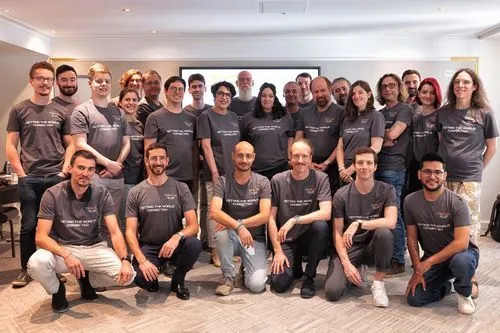VDI vs RDP: A Practical Decision Framework (Costs, Risks & How To Supercharge RDS With or Without VDI)
VDI vs RDP: a practical decision-making framework to examine costs, risks and requirements. Discover how to supercharge RDS with or without VDI.
Would you like to see the site in a different language?
RDS TOOLS BLOG
Having looked at VDI and RDS in parallel to compare them, see their weak points and how RDS-Tools meets those needs, we go into further detail with VDI for a deeper more thorough look at what how our multi-tools secures, monitors and supports your VDI infrastructure.
)
Virtual Desktop Infrastructure (VDI) has quickly evolved from a niche IT solution into a mainstream way of working. As hybrid and remote work become permanent features of business life, organizations are under pressure to deliver secure, reliable desktops that users can access from anywhere.
VDI answers this need by moving desktops away from local hardware and into the data centre or cloud. Instead of depending on office PCs or laptops with scattered configurations, employees log into standardised, centrally managed desktops. This shift gives IT teams more control, reduces risks and increases flexibility for workers.
Building a VDI system is only the start. Once deployed, administrators face challenges around security, performance and user support. Without the right tools, the promised efficiency of Virtual Desktop Infrastructure can quickly turn into a management burden.
That is why RDS Tools exists. By adding advanced security, real-time monitoring and remote support capabilities, RDS Tools helps organizations get the most from VDI, ensuring desktops stay safe, performant and user-friendly.
At its simplest, VDI is a way of delivering desktop operating systems as virtual machines hosted in a central environment. Instead of running Windows or Linux on a personal device, users connect over the network to a desktop image running on a server.
Both models have their place, but they highlight why operations, monitoring and support matter so much. Each approach brings unique risks and support needs, which can overwhelm IT without the right tools.
For a more detailed comparison of VDI and RDS (Remote Desktop Services) see our earlier article on RDS vs VDI Deployment .
RDS and VDI often get compared, but they are not interchangeable:
Despite these architectural differences, both approaches share pain points:
This overlap is where tools that focus on management and optimization like RDS Tools, prove their worth, regardless of whether an organisation leans toward RDS, VDI or a hybrid mix.
The business case for VDI is strong, but real-world deployments surface common challenges:
1. Complexity and Scale
IT departments must manage persistent vs. non-persistent desktops, allocate resources across hosts, and prevent “VM sprawl.” Without monitoring, it is easy to miss overloaded servers or underutilised virtual machines.
2. Security Risks
Virtual Desktop Infrastructures can be targeted by:
3. User Experience
Slow logins, session freezes or lagging desktops can erode confidence in VDI. Employees often compare their virtual desktop to their old physical PC and if performance dips, IT hears about it immediately.
4. Support Burden
Because each VDI desktop functions like an individual machine, IT support teams may need to troubleshoot dozens or hundreds of isolated problems. Helpdesk queues swell if the right support tools are not in place.
RDS Tools directly addresses these challenges with a suite of solutions tailored for centralised desktop environments.
Together, these features harden VDI environments against the most common attack vectors.
Monitoring gives IT teams visibility into what is happening inside VDI, turning guesswork into data-driven management.
Remote Support ensures that employees stay productive, even when technical issues arise.
In practice: VDI provides the foundation. RDS Tools makes it secure, reliable and manageable.
A growing business might use RDS for lightweight applications but turn to a Virtual Desktop Infrastructure for staff who need dedicated desktops. RDS Tools provides unified monitoring and security across both technologies, avoiding tool sprawl.
Large organizations often migrate gradually from RDS to VDI. During this transition, visibility and continuity are critical. RDS Tools ensures that both environments are secured and monitored consistently.
For companies with fully remote workforces, Virtual Desktop Infrastructures provide centralised desktops for compliance and control. With RDS Tools, they can enforce strict security rules monitor performance across global users and deliver fast support when employees encounter issues.
Following these practices ensures that VDI delivers not just flexibility, but also resilience and cost efficiency.
Industry leaders like Citrix, VMware Horizon and Azure Virtual Desktop provide powerful VDI ecosystems. But with that power comes complexity and high licensing costs.
RDS Tools takes a different approach:
For many IT managers, this makes RDS Tools the pragmatic choice to get VDI right without overspending.
Virtual Desktop Infrastructures enable organizations to support remote and hybrid workforces, simplify desktop management, and meet compliance needs. But success is not guaranteed by infrastructure alone. Without visibility, security and effective support, even the most advanced VDI system can falter.
RDS Tools closes this gap by delivering three essentials every VDI deployment needs:
Ready to make your Virtual Desktop environment stronger? Explore RDS Tools solutions today and see how simple it can be to secure, monitor, and support your virtual desktops.
Simple, Robust and Affordable Remote Access Solutions for IT professionals.
The Ultimate Toolbox to better Serve your Microsoft RDS Clients.
 Get in touch
Get in touch
